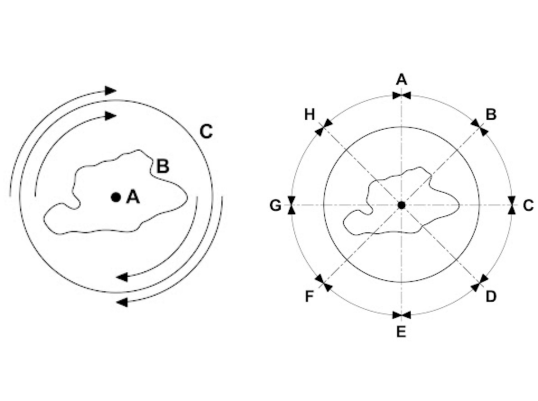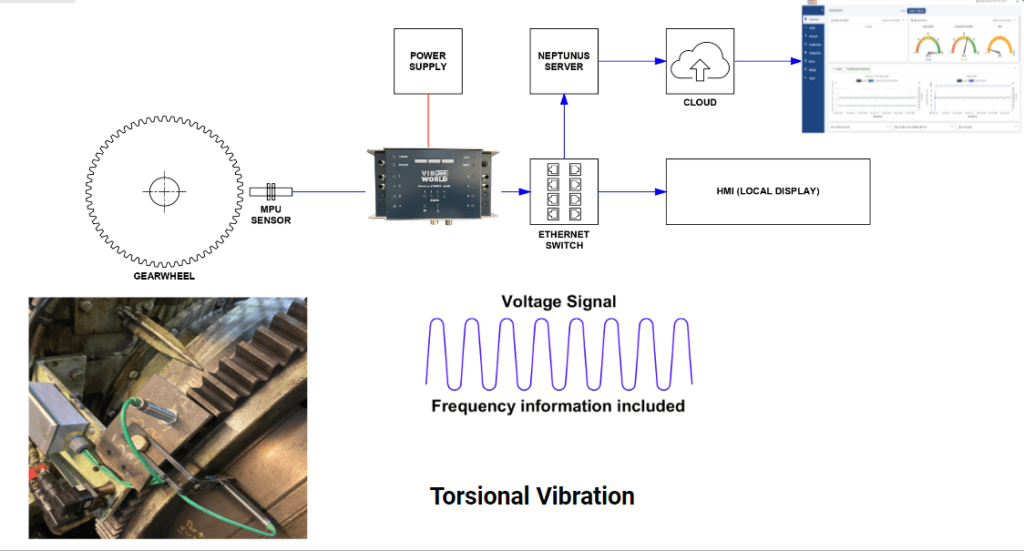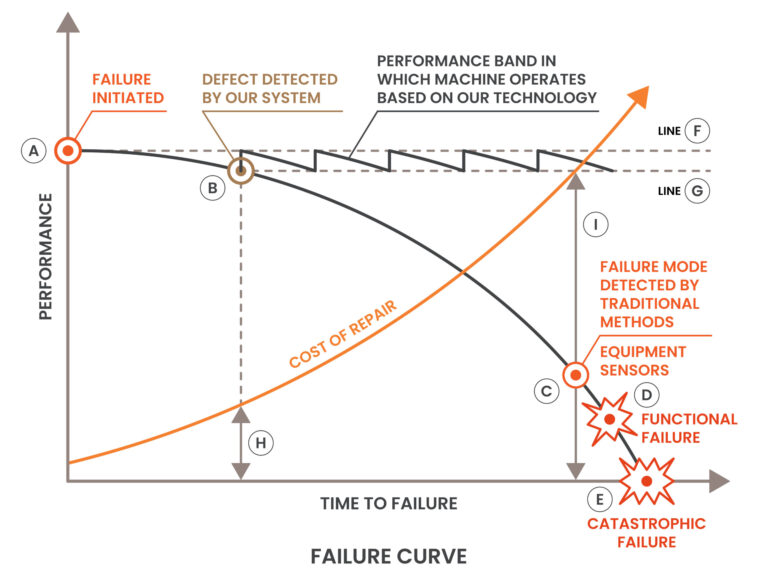What is Torsional Vibration?
It is the study of the instantaneous angular speed of a rotating shaft and the variation of speed within each rotation.
How Does Torsional Vibration Work?

In an ideal scenario, shaft ‘C’ rotates around its central axis point ‘A’ without any noticeable movement of this axis. This occurs when the rotor is well balanced and the bearings are in excellent condition. However, when a defect arises, as depicted in the figure on the right, the shaft starts to vibrate. Consequently, point ‘A’ traces a path denoted as ‘B’ during each rotation. This indicates that the displacement, and subsequently the velocity and acceleration of point ‘A’ (and thus the entire shaft), undergo variations from segments ‘A-B,’ ‘B-C,’ and so forth. The change in velocity between these segments represents the alteration in the shaft’s instantaneous angular speed.
Just as accelerometers analyze velocity, acceleration, and displacement using Fast Fourier Transform (FFT) analysis, the study of torsional vibrations involves subjecting angular displacement, velocity, and acceleration to FFT examination.
How Is Torsional Vibration Measured at Neptunus?

Torsional vibration can be measured using the provided system, where a single non-intrusive Magnetic Pickup Unit (MPU) near the engine or machine’s flywheel generates a voltage signal. This signal is processed by the ViBox (Intelligent Controller), equipped with an AC-DC converter to digitize the MPU’s analog signal. The main processor, featuring embedded signal processing capabilities, analyzes the digital signal without relying on cloud processing. The ViBox includes a user interface and can connect to any HMI compatible with Windows, iOS, or Linux. It stores data internally, with a capacity for 50,000 data points, and offers remote monitoring via an internet connection to a cloud platform. Operating in short cycles, the ViBox collects and analyzes data for about 20 seconds, providing real-time machinery health data approximately every minute, facilitating efficient torsional vibration measurement and analysis.
What Is The Significance Of Torsional Vibration Data For A Rotating Machine?

Early detection of emerging faults is a critical requirement for safeguarding machines against functional failures. Simultaneously, it provides operators with ample lead time to plan repairs optimally. This leads to improved inventory and logistics management. As the time required to identify faults decreases, prompt corrective actions can be taken, resulting in a substantial reduction in unscheduled downtime and repair costs.
The above diagram provides a clear illustration. Warnings from the engine manufacturer’s Electronic Control Module (ECM) occur just in time to prevent catastrophic failures where components within the engine or machine have already failed, necessitating expensive corrective measures. While certain methods, like fluid analysis and inspections using ultrasound or borescopes, can detect failures earlier than ECMs, they often fall short of expectations and cannot reliably transition from planned maintenance scheduling (PMS) to a condition-based maintenance schedule (CBM).
Torsional vibrations offer us the advantage of future planning, data exploration, and advanced analytics, which can significantly reduce operating costs. It is the most advanced fault detection system that goes beyond mere condition monitoring, providing operators with the data needed to maintain their machines optimally.
How Do You Benefit from This Data?
A lot can be learned about the machine by gathering torsional vibration data. Following are some of the top benefits of torsional vibration data.
1. No baseline for a good machine is needed.
2. Early Warning of Emerging Defects
3. Plan maintenance cycles based on the condition of the equipment.
4. Eliminate failures and breakdowns.
5. Daignostics of Machine Health by Building Long-Term Trends